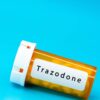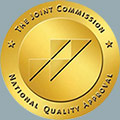Precipitated withdrawal refers to withdrawal symptoms that are caused by medication-assisted treatment (MAT) or medications rather than symptoms that occur because of an absence or abstinence from the chosen drug of abuse, usually opioids.
According to the National Institute on Drug Abuse (NIH), “Opioids are a class of drugs that include the illegal drug heroin, synthetic opioids such as fentanyl, and pain relievers available legally by prescription, such as oxycodone (OxyContin®), hydrocodone (Vicodin®), codeine, morphine, and many others.” When opioids are ingested, they work by attaching to opioid receptors, which are in one’s brain, spinal cord, gastrointestinal tract, and other organs in one’s body. Opioids adjust the amount of information surrounding pain that is relayed to various areas of one’s body, by reducing one’s perception of pain. Precipitated withdrawal is expected when using naloxone to reverse an opioid overdose, but it can also happen when certain medications are used to treat opioid use disorder such as Suboxone, Vivitrol, or buprenorphine.
How Does It Happen?
Precipitated withdrawal can occur when an antagonist (such as Vivitrol) or partial antagonist (such as buprenorphine) is administered to an individual that is dependent on full agonist opioids. Buprenorphine, for example, is a opioid partial agonist that acts in the central nervous system. Because of buprenorphine’s high affinity but low intrinsic activity to the mu-opioid receptors (MORs), though it stimulates the same brain receptors as other opiates, the partial antagonist displaces agonist opioids from the mu receptors, without activating the receptor to an equivalent degree. If this occurs it will result in a net decrease in agonist effect, which can lead to precipitated withdrawal.
Signs and Symptoms
Precipitated withdrawal can cause a range of uncomfortable symptoms. Generally, the symptoms that occur with precipitated withdrawal can be described as the opposite of an opioid high. Instead of reduced pain, increased pleasure, and a sense of euphoria, precipitated withdrawal causes sudden, intense pain and anxiety. Other reported symptoms of precipitated withdrawal may include, but are not limited to any combination of the following examples:
- Diarrhea
- Nausea
- Vomiting
- Runny nose
- Goosebumps
- Chills
- Headaches
Precipitated withdrawal happens quickly as opposed to the gradual process and slower onset of withdrawal symptoms that manifest when ceasing use of an abused substance. The rapid onset of symptoms can exacerbate the discomforts associated with precipitated withdrawal, as they can be exceptionally disorienting.
For Information and Support
Contemplating detox can be a very challenging time. Before any individual can begin to work on the underlying issues contributing to their substance abuse problem, they must be separated from the substances in their systems. If you are concerned for yourself or a loved one regarding substance abuse, and/ or addiction we recommend reaching out for help as soon as possible. The earlier you seek support, the sooner you and your loved ones can return to leading happy, healthy, and fulfilling lives. Sherwood Detox offers a stand-alone detox program. For additional information on detox, please do not hesitate to contact us at: 818-626-9959 or feel free to email us anytime. One of our trusted counselors is available to talk and discuss how we can best support you on your journey.









